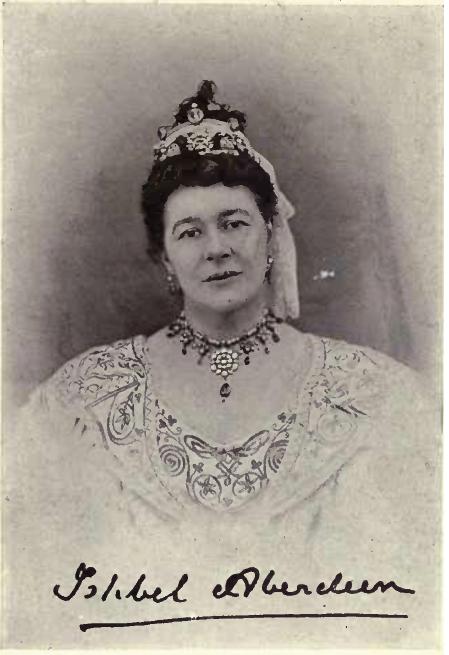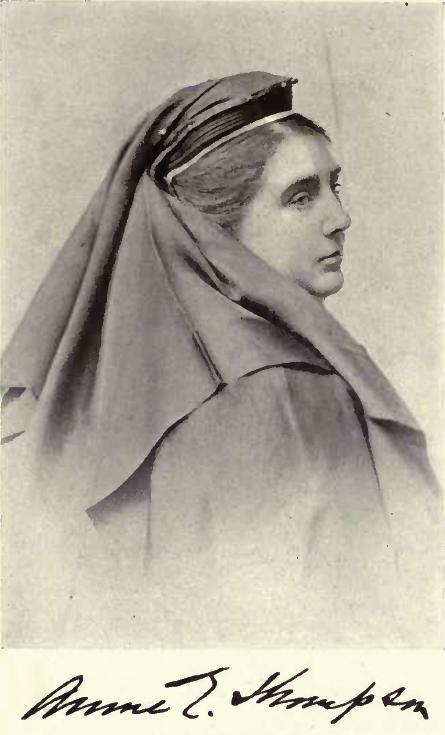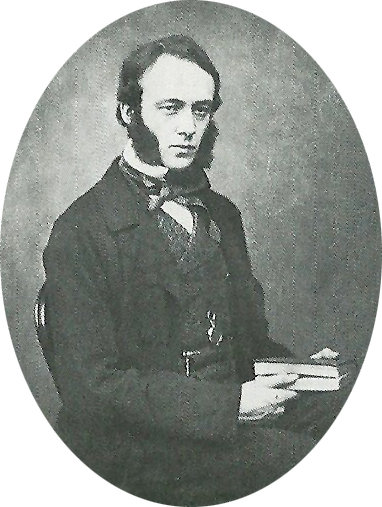|
John Campbell Hamilton-Gordon, 1st Marquess Of Aberdeen And Temair
John Campbell Hamilton-Gordon, 1st Marquess of Aberdeen and Temair, (3 August 1847 – 7 March 1934), known as The 7th Earl of Aberdeen from 1870 to 1916, was a British politician. Born in Edinburgh, Lord Aberdeen held office in several countries, serving twice as Lord Lieutenant of Ireland (1886; 1905–1915) and serving from 1893 to 1898 as Governor General of Canada.Chambers Biographical Dictionary, , page 4 Early and personal life Lord Aberdeen was born in Edinburgh to George Hamilton-Gordon, 5th Earl of Aberdeen, and his wife, Mary Baillie, daughter of George Baillie and sister to George Baillie-Hamilton, 10th Earl of Haddington, The 10th Earl of Haddington. He studied at the University of St Andrews and University College, Oxford. He succeeded as The 7th Earl of Aberdeen following the death of his eldest brother, George Hamilton-Gordon, 6th Earl of Aberdeen, George, 6th Earl of Aberdeen, in January 1870. In 1877 he married Ishbel Hamilton-Gordon, Marchioness of Aberdee ... [...More Info...] [...Related Items...] OR: [Wikipedia] [Google] [Baidu] |
The Most Honourable
The honorific prefix "The Most Honourable" is a form of address that is used in several countries. In the United Kingdom, it precedes the name of a marquess or marchioness. Overview In Jamaica, Governors-General of Jamaica, as well as their spouses, are entitled to be styled "The Most Honourable" upon receipt of the Jamaican Order of the Nation."National Awards of Jamaica" Jamaica Information Service, accessed May 12, 2015. Prime Ministers of Jamaica, and their spouses, are also styled this way upon receipt of the Order of the Nation, which is only given to Jamaican Governors-General and Prime Ministers. In |
John Sparrow David Thompson
Sir John Sparrow David Thompson (November 10, 1845 – December 12, 1894) was a Canadian lawyer, judge and politician who served as the fourth prime minister of Canada from 1892 until his death. He had previously been fifth premier of Nova Scotia for a brief period in 1882. Thompson was born in Halifax, Nova Scotia. He trained as a lawyer and was called to the bar in 1865. Thompson was elected to the Nova Scotia House of Assembly in 1877 as a representative of the Conservative Party. He became the provincial attorney general the following year, in Simon Holmes' government, replaced Holmes as premier in 1882. However, he served for only two months before losing the 1882 general election to the Liberal Party. After losing the premiership, he accepted an appointment to the Nova Scotia Supreme Court. In 1885, Thompson entered federal politics at the personal request of Prime Minister John A. Macdonald, becoming Minister of Justice. In that role he was the driving force behind t ... [...More Info...] [...Related Items...] OR: [Wikipedia] [Google] [Baidu] |
British People
British people or Britons, also known colloquially as Brits, are the citizens of the United Kingdom of Great Britain and Northern Ireland, the British Overseas Territories, and the Crown dependencies.: British nationality law governs modern British citizenship and nationality, which can be acquired, for instance, by descent from British nationals. When used in a historical context, "British" or "Britons" can refer to the Ancient Britons, the indigenous inhabitants of Great Britain and Brittany, whose surviving members are the modern Welsh people, Cornish people, and Bretons. It also refers to citizens of the former British Empire, who settled in the country prior to 1973, and hold neither UK citizenship nor nationality. Though early assertions of being British date from the Late Middle Ages, the Union of the Crowns in 1603 and the creation of the Kingdom of Great Britain in 1707 triggered a sense of British national identity.. The notion of Britishness and a shared Brit ... [...More Info...] [...Related Items...] OR: [Wikipedia] [Google] [Baidu] |
Aberdeenshire
Aberdeenshire ( sco, Aiberdeenshire; gd, Siorrachd Obar Dheathain) is one of the 32 Subdivisions of Scotland#council areas of Scotland, council areas of Scotland. It takes its name from the County of Aberdeen which has substantially different boundaries. The Aberdeenshire Council area includes all of the area of the Counties of Scotland, historic counties of Aberdeenshire and Kincardineshire (except the area making up the City of Aberdeen), as well as part of Banffshire. The county boundaries are officially used for a few purposes, namely land registration and Lieutenancy areas of Scotland, lieutenancy. Aberdeenshire Council is headquartered at Woodhill House, in Aberdeen, making it the only Scottish council whose headquarters are located outside its jurisdiction. Aberdeen itself forms a different council area (Aberdeen City). Aberdeenshire borders onto Angus, Scotland, Angus and Perth and Kinross to the south, Highland (council area), Highland and Moray to the west and Aber ... [...More Info...] [...Related Items...] OR: [Wikipedia] [Google] [Baidu] |
Tarland
Tarland (Gaelic: ''Turlann'') is a village in Aberdeenshire, Scotland and is located northwest of Aboyne, and west of Aberdeen. Population 720 (2016). Tarland is home to the Culsh Earth House, an Iron Age below-ground dwelling that otherwise known as a Souterrain. Souterrains were used to store food and the Culsh Earth House probably served as a community cellar. Just south of Tarland is the Tomnaverie stone circle, a 4,000-year-old recumbent stone circle. The land is owned by the MacRobert Trust and in the care of Historic Scotland. The circle was recently restored with help from a donation by the trust. Melgum Lodge near Tarland was originally built as a hunting lodge for the physician to Queen Victoria who frequently stayed in the vicinity at Balmoral Castle. Tarland Church ( gd, Cill Mo Luaig) commemorates ''Mo Luag'', a saint more often associated with the west coast. According to legend, a wizard once lived in the area. It was said that he once came to Tarland Fair ... [...More Info...] [...Related Items...] OR: [Wikipedia] [Google] [Baidu] |
United Kingdom Of Great Britain And Ireland
The United Kingdom of Great Britain and Ireland was a sovereign state in the British Isles that existed between 1801 and 1922, when it included all of Ireland. It was established by the Acts of Union 1800, which merged the Kingdom of Great Britain and the Kingdom of Ireland into a unified state. The establishment of the Irish Free State in 1922 led to the remainder later being renamed the United Kingdom of Great Britain and Northern Ireland in 1927. The United Kingdom, having financed the European coalition that defeated France during the Napoleonic Wars, developed a large Royal Navy that enabled the British Empire to become the foremost world power for the next century. For nearly a century from the final defeat of Napoleon following the Battle of Waterloo to the outbreak of World War I, Britain was almost continuously at peace with Great Powers. The most notable exception was the Crimean War with the Russian Empire, in which actual hostilities were relatively limited. How ... [...More Info...] [...Related Items...] OR: [Wikipedia] [Google] [Baidu] |
Midlothian
Midlothian (; gd, Meadhan Lodainn) is a historic county, registration county, lieutenancy area and one of 32 council areas of Scotland used for local government. Midlothian lies in the east-central Lowlands, bordering the City of Edinburgh, East Lothian and the Scottish Borders. Midlothian emerged as a county in the Middle Ages under larger boundaries than the modern council area, including Edinburgh itself. The county was formally called the "shire of Edinburgh" or Edinburghshire until the twentieth century. It bordered West Lothian to the west, Lanarkshire, Peeblesshire and Selkirkshire to the south, and East Lothian, Berwickshire and Roxburghshire to the east. Traditional industries included mining, agriculture and fishing – although the modern council area is now landlocked. History Following the end of the Roman occupation of Britain, Lothian was populated by Brythonic-speaking ancient Britons and formed part of Gododdin, within the Hen Ogledd or Old North. In the ... [...More Info...] [...Related Items...] OR: [Wikipedia] [Google] [Baidu] |
Edinburgh
Edinburgh ( ; gd, Dùn Èideann ) is the capital city of Scotland and one of its 32 Council areas of Scotland, council areas. Historically part of the county of Midlothian (interchangeably Edinburghshire before 1921), it is located in Lothian on the southern shore of the Firth of Forth. Edinburgh is Scotland's List of towns and cities in Scotland by population, second-most populous city, after Glasgow, and the List of cities in the United Kingdom, seventh-most populous city in the United Kingdom. Recognised as the capital of Scotland since at least the 15th century, Edinburgh is the seat of the Scottish Government, the Scottish Parliament and the Courts of Scotland, highest courts in Scotland. The city's Holyrood Palace, Palace of Holyroodhouse is the official residence of the Monarchy of the United Kingdom, British monarchy in Scotland. The city has long been a centre of education, particularly in the fields of medicine, Scots law, Scottish law, literature, philosophy, the sc ... [...More Info...] [...Related Items...] OR: [Wikipedia] [Google] [Baidu] |
Gilbert Elliot-Murray-Kynynmound, 4th Earl Of Minto
Gilbert John Elliot-Murray-Kynynmound, 4th Earl of Minto, (; 9 July 18451 March 1914), known as Viscount Melgund by courtesy from 1859 to 1891, was a British peer and politician who served as Governor General of Canada, the eighth since Canadian Confederation, and as Viceroy and Governor-General of India, the country's 17th. Early life and career Minto was born in London, the son of William Elliot-Murray-Kynynmound, 3rd Earl of Minto, and Emma, daughter of General Sir Thomas Hislop, 1st Baronet. After the death of his grandfather in 1859 he became known by the courtesy title of Viscount Melgund. After completing his education at Eton College and Trinity College, Cambridge, he was commissioned a Lieutenant in the Scots Guards in 1867, but left in 1870. He joined the 1st Roxburghshire Mounted Rifle Volunteer Corps as a captain in 1872. In 1874, in the capacity of a newspaper correspondent, he witnessed the operations of the Carlists in Spain; he took service with the Turkish ar ... [...More Info...] [...Related Items...] OR: [Wikipedia] [Google] [Baidu] |
Frederick Stanley, 16th Earl Of Derby
Frederick Arthur Stanley, 16th Earl of Derby, (15 January 1841 – 14 June 1908) styled as Hon. Frederick Stanley from 1844 to 1886 and as The Lord Stanley of Preston between 1886 and 1893, was a Conservative Party politician in the United Kingdom who served as Colonial Secretary from 1885 to 1886 and Governor General of Canada from 1888 to 1893. An avid sportsman, he built Stanley House Stables in England and is famous in North America for presenting Canada with the Stanley Cup. Stanley was also one of the original inductees of the Hockey Hall of Fame. Background and education Stanley was the second son of Prime Minister Edward Smith-Stanley, 14th Earl of Derby, and the Hon. Emma Caroline, daughter of Edward Bootle-Wilbraham, 1st Baron Skelmersdale. He was born in London, and educated at Eton and Sandhurst. He received a commission in the Grenadier Guards, rising to the rank of Captain before leaving the army for politics.''Burke's'', 'Derby'. [...More Info...] [...Related Items...] OR: [Wikipedia] [Google] [Baidu] |
Robert Gascoyne-Cecil, 3rd Marquess Of Salisbury
Robert Arthur Talbot Gascoyne-Cecil, 3rd Marquess of Salisbury (; 3 February 183022 August 1903) was a British statesman and Conservative politician who served as Prime Minister of the United Kingdom three times for a total of over thirteen years. He was also Foreign Secretary for much of his tenure, and during his last two years of office he was Lord Keeper of the Privy Seal. He avoided alignments or alliances, maintaining the policy of "splendid isolation". Lord Robert Cecil, also known as Lord Salisbury, was first elected to the House of Commons in 1854 and served as Secretary of State for India in Lord Derby's Conservative government 1866–1867. In 1874, under Disraeli, Salisbury returned as Secretary of State for India, and, in 1878, was appointed foreign secretary, and played a leading part in the Congress of Berlin. After Disraeli's death in 1881, Salisbury emerged as Conservative leader in the House of Lords, with Sir Stafford Northcote leading the party in the Comm ... [...More Info...] [...Related Items...] OR: [Wikipedia] [Google] [Baidu] |
Archibald Primrose, 5th Earl Of Rosebery
Archibald Philip Primrose, 5th Earl of Rosebery, 1st Earl of Midlothian, (7 May 1847 – 21 May 1929) was a British Liberal Party politician who served as Prime Minister of the United Kingdom from March 1894 to June 1895. Between the death of his father, in 1851, and the death of his grandfather, the 4th Earl of Rosebery, in 1868, he was known by the courtesy title of Lord Dalmeny. Rosebery first came to national attention in 1879 by sponsoring the successful Midlothian campaign of William Ewart Gladstone. He briefly was in charge of Scottish affairs. His most successful performance in office came as chairman of the London County Council in 1889. He entered the cabinet in 1885 and served twice as foreign minister, paying special attention to French and German affairs. He succeeded Gladstone as prime minister and leader of the Liberal Party in 1894; the Liberals lost the 1895 election. He resigned the party leadership in 1896 and never again held political office. Rosebery ... [...More Info...] [...Related Items...] OR: [Wikipedia] [Google] [Baidu] |






